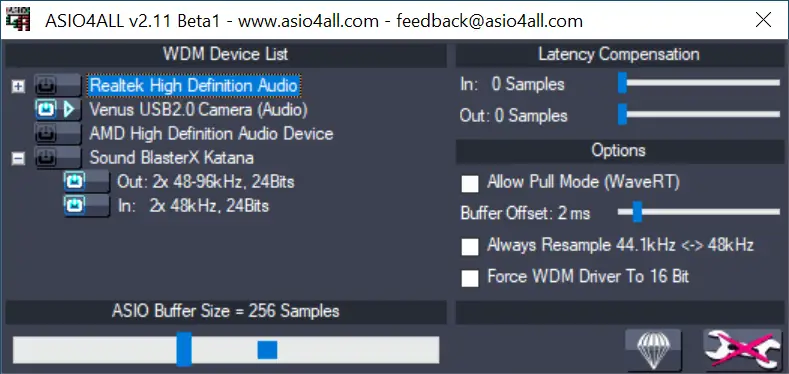- Finally, something new for you to mess around with!
Changes since version 2.10:
- Support multiple sample rates concurrently – for as long as they are physically derived from a common master clock, are integral multiples of each other (except 44.1/48kHz special case), etc…
- Support a number of sample rates on the ASIO side that the audio device does not physically support. Basically, this means an extension to the on-the-fly rate conversion capabilities.
- Fix a regression introduced in 2.10 related to input device aggregation.
- Minor stuff, as usual…





Leave a Reply